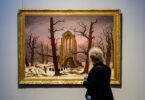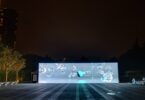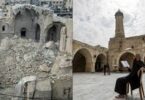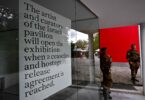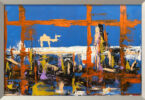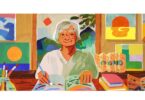MADRID (Agencies): For the past six months, Madrid’s Reina Sofia Museum has been hosting an extensive exhibition of modern and contemporary art from Morocco. “Moroccan Trilogy” examines how the North African country’s artistic practices developed in three crucial stages, from the days of independence and identity-searching in the 1950s and 1960s, through the era of internal conflicts of the 1970s and 1980s, until now — a time that poses socio-economic and political challenges.
From a 20th-century painting incorporating indigenous Amazigh symbols to an intense film installation recreating scenes of Moroccans working at a Spanish-Moroccan border post, it is a riveting show containing work from more than 50 painters, photographers, and filmmakers.
Abdellah Karroum, the show’s co-curator, prioritized creating a research-based, in-depth experience, which he found was lacking from previous showcases of art from his native country.
“It was more promotional and touristic than historical. With this exhibition, it’s telling a history of art in Morocco from a more neutral view,” Karroum told Arab News. “Many artworks that you can see in ‘Moroccan Trilogy’ are addressing the ideas of freedom, equality, emancipation. In this period in Morocco, there was an active participation of artists and intellectuals, who were finding new social models, (showing) how artists are contributing to the making of a social fabric.”
For many Spaniards, he said, the exhibition has been like “discovering an art scene.” Opening the show are powerful canvases by modernists Ahmed Cherkaoui and Ahmed Amrani, among others, who were influenced by their artistic heritage and political surroundings. “Artists started to build a strong language to look for an identity that would detach and liberate them from the colonial power,” noted Karroum.
Also featured is a fascinating selection of the avant-garde, decolonizing magazine “Souffles” (or “Anfas”), founded in 1966, which delved the current affairs of the day — from the role of foreign banks in Morocco to the Palestinian-Israeli dilemma. Meanwhile, the current generation of socially-engaged Moroccan artists, featured towards the end of the show, are globally dispersed, experimenting with a variety of materials, technology and digital art.
Karroum feels most connected to the latter. “They are finding a language that is somehow more universal,” he said. “This generation is not finished. It’s still in progress.”

